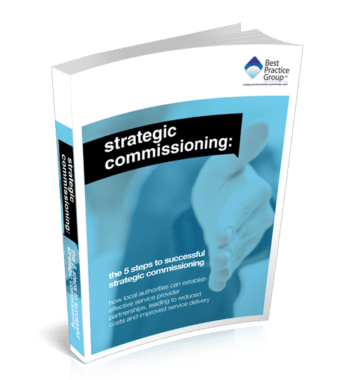 Despite the protestations of G4S in public, the organisation’s actions suggest the possibility of a warmer reception behind the scenes to Allied Universal’s approaches, according to reports in The Times last month.
Despite the protestations of G4S in public, the organisation’s actions suggest the possibility of a warmer reception behind the scenes to Allied Universal’s approaches, according to reports in The Times last month.
The appointment of an independent consultant as a go-between could mean that the world’s biggest security firm is at least considering its options.
Any takeover, hostile or otherwise, often means change and change can mean uncertainty. If your own supplier looks to be going this way, what signs should you look out for to protect the integrity of your service delivery?
Garda and Allied Universal test the water
In October, ThisIsMoney.co.uk reported that G4S was ‘battling’ with Canadian rival GardaWorld over its £3 billion hostile takeover bid. A bid which G4S is reported to have responded to by saying: ‘The board, once again, unanimously rejected this offer as it continues to significantly undervalue the company.’
It seems that the whole process had started to get ugly, with the media reporting that GardaWorld had questioned G4S’s finances, brought up a number of historic legal cases, and suggested that G4S had serious pension fund issues. G4S reportedly hit back by claiming that GardaWorld had made losses to the tune of CAD$940 million over the last few years and that its offer was ‘opportunistic’.
In November, the FT reported that G4S had ‘turned away’ Allied Universal’s £3.3 billion bid for the company. The Times reported that G4S had told the stock market of the ‘semi-formal’ approach, but that the ‘board of G4S firmly believes that the company has a strong independent future’ and that once again the offer ‘significantly undervalues G4S and its prospects’.
If matters had been left at that it would have looked like a fairly standard hostile takeover bid, but the appointment of an intermediary suggests G4S is at least in listening mode and, should the price per share hit the right number, maybe its answer will be more positive.
If any takeover does go ahead, change of some kind will be implemented – but change is not always a bad thing. Talking in general terms, new management can provide an injection of new blood into an organisation, along with new talent, new directions and new vitality.
Of course, change implemented poorly can raise challenges. Focus can drift to untested priorities; fear of the unknown can mean stakeholders overcompensating and markets can choose how to influence the public mood for the takeover which can ripple down through the organisation.
Does size really matter when choosing a strategic partner…?
‘Size’ is often mistaken for ‘stability’ when choosing a strategic partner. When any major change happens within a supplier organisation, our evidence of working across more than 500 strategic supplier relationships indicates there is a likelihood of those changes impacting the mechanisms of your relationship with them and their ability to maintain service levels.
So, if your supplier is facing a period of potentially significant change, what should you do to protect your service levels?
Four signs to watch out for to protect your service delivery
If your supplier is going through a period of change, or even if you have started to hear rumblings of issues at a corporate level, it makes sense to closely monitor the relationship for signs that your service levels are being impacted.
Should they be, the sooner you can identify and communicate your concerns to your supplier, the greater the likelihood of them being addressed and your relationship put back on a more stable and productive course.
Key symptoms to look out for:
-
- Key staff disappearing
Not all supplier staff are created equal. There will be some without whom you’d be lost. They are the ones who know your service deliverables and have a detailed understanding of your expectations and how to drive better value in the relationship.
These are likely to be the ones with the best ideas, responsibility for succession training and those that others in their department look up to. They are the leaders and the technical gurus, the innovators and the dedicated team players.
Should these elite staff numbers start to dwindle, you’ll notice it. For some you’ll know straight away. For others, it may be the ‘something’s missing’ that will be your first sign that they’ve gone.
When a company wants to fight off a hostile bid, it needs to make itself look as productive as possible. This may result in pulling key staff from existing relationships and moving them into new ones. Also, when a takeover is rumoured, it’s usually these key staff with their ear to the commercial ground who will know it first and might jump ship to pastures new to protect their careers.
The loss of one or two of these key staff should not be seen as definite proof of a bigger issue, but it should be considered a reason to keep a closer eye on things.
-
- Overall staff numbers reducing
You’d imagine that a strategic supplier would not over-resource a project as this would adversely impact its profit margin. It will often use just enough people with the skills needed to deliver the service they are responsible for providing.
So, what should you do if you notice that your supplier team is becoming fewer in number over a sustained period of time? You should question whether there has been any technical advancement that might have enabled the supplier to trim their human resources. Has there been a process streamlining exercise that has increased their per capita productivity so that a number of supplier staff have now become superfluous to requirements… or is there something else (mass redundancy) they might have insights into?
When a company is struggling, or when it is attempting to puff up its perceived value in the eyes of the market or potential buyers, the reallocation of team members, just like key supplier staff members, may occur.
The supplier may look to temporarily stretch themselves more thinly to take on more projects and improve short to medium term turnover and your relationship may suffer as a result.
Once again, the sooner you are able to identify this and differentiate it from a normal attrition rate or some other sensible reason, the sooner you can put more focus on this move to protect your service delivery.
-
- Service levels falling
With fewer key supplier staff and team members, a fall in service levels is an almost inevitable outcome. However, a drop in service levels can be a first indication of a deeper issue. Service levels could fall if quality supplier staff are replaced with team members who are less skilled or less experienced and, while numbers remain the same, the supplier’s ability to deliver on expectations may be reduced.
Service levels can also fall if supplier staff motivation wanes. When a company is going through a period of commercial trauma or turmoil, pay rises might be cancelled or bonuses reduced. If staff get wind of the problems their employer is facing, they may worry about the stability of their jobs, their future prospects, and their careers. All of which can lead to a distracted or demotivated workforce.
Once again, a short-term drop in productivity does not necessarily mean a medium or longer term problem, especially if you only have data gathered over a short period to go on. However, just like the other indicators mentioned here, it is another reason to keep a watchful eye on what’s happening with your supplier to see whether it is an indication of something more serious.
-
- Innovation void
There are usually two factors at work with innovation. One is personnel led, the other financially led. The personnel factor is that with either dwindling staff numbers or less skilled staff, you will have fewer specialists on the supplier side with the will, the means and the capacity to innovate.
Therefore, any time previously dedicated to regular, or even improvised, innovation, brainstorming or improvement programmes may start to slip or disappear altogether.
The financial factor is that a struggling supplier organisation, or one implementing significant business change, may well have fewer resources to invest in your individual relationship and could cut back on implementing innovation to end up delivering a ‘just enough’ or ‘what can we get away with’ service.
As with all observations, early indications should be monitored. If you find yourself with an ongoing problem with reduced service, it should be raised with your supplier so you can do what you can to address the matter and ensure adequate resources and will is injected back into your relationship.
Conclusion
The potential takeover bids are hotting up for G4S, as both GardaWorld and Allied Universal have just weeks to revise their offers should they wish to. In the meantime G4S is on the charm offensive, attempting to persuade its shareholders that it makes financial sense to stick with them with a promise of dividends resuming in 2021.
There are likely to be further twists and turns in this situation, so watch this space. With media reports of the value of G4S having risen to £3.5 million, any additional offer from either party would likely need to be substantially higher for the company to consider it.
Photo credit: iStock

